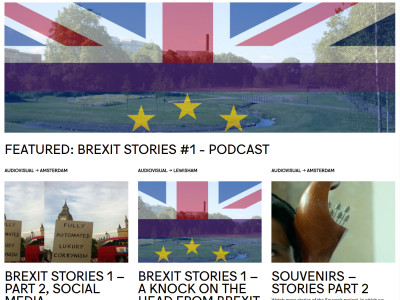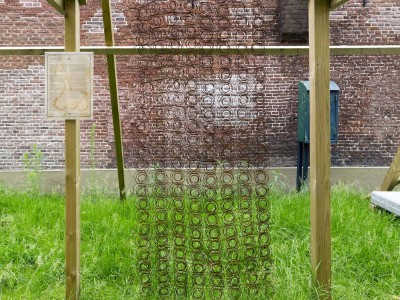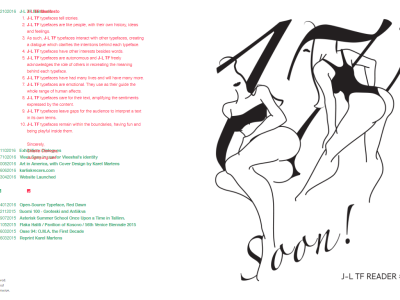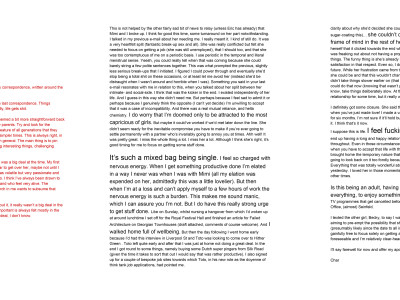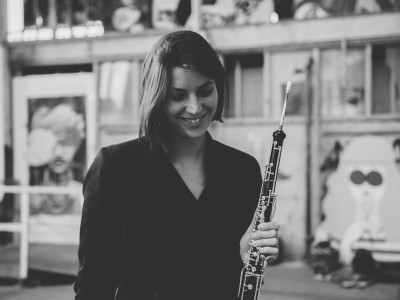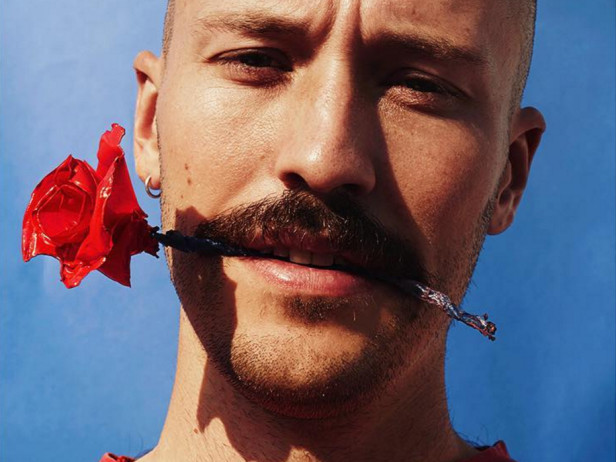
Charlie Clemoes
Last month we sat down with WOW Artist in Residence Charlie Clemoes to talk about his latest projects and developments.
Charlie is first of all a writer, “not really an artist”, even if recently he has also been experimenting with artist practices. He holds degrees in history, middle eastern studies and then urban studies. His interest has always centred on how people shape and are affected by the urban environment, and so his dissertations for these were, first, on graffiti in May 68 and then on the manifestation of this specific cartoon character in the Palestinian territories, and the last one on how people form a sense of place when living precariously.
He is also one of the editors of Failed Architecture, for which he is now working on a three part series on London and clubbing, and the influence of property development on the clubbing scene in the city, and then also a series on Dutch cities from an outsider’s perspective, where he walks around the city and thinks about what it means to him as a whole.
He is also editor-in-chief of European Echo, a legacy of the New Europeans project, with which he was involved at the beginning of the year. European Echo is a site which aims to counter national frameworks and rehabilitate a progressive, popular idea of Europe through a series of podcasts, stories and opinion.
In addition, he works as an editor for Mid-Century Home and Hoop Doop, and as an academic proofreader with Scribbr. He also occasionally writes for other publications, “but since it’s not so easy to get paid, it’s not something I’ve been able to really commit to until recently. Even with Failed Architecture the pay is minimal, because it is a non-profit publication, which is also what makes it special, you don’t have to worry about advertisers’ opinions.”
I find interesting your double interest in storytelling and architecture, how did this double interest came into being for you?
I could describe it in a romanticized way, but primarily the reason I started doing it was to indulge in my interest in storytelling, where buildings are my tools to tell a story rather than being genuinely interested in the architecture per se. I have no knowledge of architectural techniques, or skills. I use the building as a tool to tell a story about people, too often architecture writing excludes the actual people that are involved in it. So the pragmatic reason is that I had this opportunity to write for a magazine and I had some experience with urban theory, and I had a space where I could write freely and develop my own writing.
“But then on a more romanticized side, when I stayed in Bologna (Italy), I couldn’t help but think that there are some buildings that really tell a story about how people have cared for them. For me this idea of investing in and taking care of a building is a sort of anti- or post- capitalist way of living. Because your investment is not for an economical return, but it is a sign of love toward the building. Very different from the methods of building restoration used in countries like England or the Netherlands, where only the facade is kept from the old building. For me keeping the facade is just exploiting the monetary value of the building, keeping just the pure surface of it, it is very superficial.”
So for you a building mainly tells a story when it’s inhabited, when it’s used?
I think so, quite possibly. I just haven’t told a story about a building that is being built. It is almost the opposite of what architects deal with. I am exclusively interested in what happens to the building afterwards. I’m not interested in the way that it looks, or who designed it, rather I’m going to look at how it has been used.
So it’s a completely different job, and it annoys architects quite a bit. I get the theories wrong, and people can get very annoyed sometimes, but I don’t care.
For example, I don’t know if you are familiar with the San Cataldo cemetery in Modena, designed by Aldo Rossi, an example of postmodern architecture. I wrote a narrative about what I was doing there and my experience of it, and in the end there was one paragraph about the fact that I felt that I couldn’t get a grasp of postmodernism. And I got mainly comments that I got postmodernism all wrong, while the whole article wasn’t about postmodernism.
By writing a narrative usually you isolate yourself from criticism because it’s a subjective perspective, it’s not like someone can come and say “you didn’t feel that”. But as soon as I write about postmodernism, it’s an objective thing, then people can disagree with my view.
About the project with the New Europeans, how was your experience of that project and what did you do there?
I got as much as I could out of that project, I produced quite a bit and my writing got a lot better, but I don’t think it was a very successful project. It succeeded for me and for all the people I worked with, but on its own terms it didn’t. A lot of interesting things came out of it, I have this website now that I’m working on, European Echo, and I’m doing a couple of projects with a few of the people I worked with at New Europeans. We also produced this really nice publication that I wrote. But it was a chaotic project. We were very micromanaged. There were a lot of government officials who took issue with some of the things we wrote, and on one occasion I even had to take something down that I wrote.
How did the whole New Europeans project start?
Well, the reason I am in Amsterdam is actually because I was asked to make an application for the New Europeans project through a friend. The aim was for young artists, designers, writers and researchers to come together to discuss the European present and come up with solutions for the future or test different ideas on how society could be formulated in a different way. It was like an informal think tank which lasted for six months, in collaboration with Europe by People, which was set up in combination with the EU Dutch Presidency. We were all from different parts of Europe, lived in different parts of the Netherlands, and worked together every day and still continue informally working together.
How did the New Europeans’ trip to Calais come about?
Going to Calais was self-organized. For the New Europeans project we were supposed to deal with the problems of Europe, or that was what they were asking of us. So we spent some time in Calais and met some people in the camp, and produced some quite interesting, useful things out of that. If I was a bit younger it would have been quite life changing, I suppose, but I feel like I’m a bit jaded, it didn’t effect me in the same way it might affect other people. Because I’ve been to places like that before, and it is really depressing, it is overwhelming, but you tend to develop a blase attitude towards it. Mind you, I would certainly like to do more things like that.
But overall with the New Europeans project, I left alone the refugee thing, because I thought that everyone is dealing with it, it’s a spectacle of concern, of looking at these poor, wretched people. Like there was a competition organized by the Dutch government to design a solution for the refugee crisis. I see that as a sort of political failure, if you’re asking artists to come up with a solution, it is saying that you have no political solution, so you’re trying to make it a little bit better. I remember some well-meaning volunteers, doing things like painting the shacks in Calais, and suddenly you think that these refugees don’t want to be here, they want to be in the UK. Whether you agree with that or not, they don’t want to be in this camp, so making the camp nice is not going to affect their decision. You can feel slightly better about it, but you’re not helping the problem, no one’s life is made better by what you are doing.
I find that the refugee crisis is a post-political crisis, in the sense that you can be from the right or the left and everybody agrees that is a crisis that needs solving. You wouldn’t see anything close to this amount of interest in the Greek debt crisis, which is a threat to the health and future of Europe, and the reason is that is not a post-political issue, it is very political and it is also quite complex.
One of your current projects is related to the work exhibited in WOW by Jung-Myung Lee, what is it about?
Emotions by type is a working title, the idea is to produce three or four short books to showcase the typefaces that Jung-Myung Lee has produced with her typefoundry.
We went through a few stages and ideas of what the books should be about and we concluded that they should be connected to what she is already doing. I have written a manifesto for her typefoundry centered on the idea that typefaces are emotions, and they have a life of their own.
I’m going to do at least three, maybe four books about her typefaces, and the theme that is connecting all of them is this emotional color wheel, produced in the 70s by this psychologist, Robert Plutchik, who attached emotions to different colors and had them opposing each other. In each book we’re going to deal with a different set of emotions. All in all, I really like Jung-Myung’s approach to fonts, and thinking of their impact on people.
Talking about collaboration, What are you looking for when you work with someone else?
Overall I’m really excited about being here in Amsterdam, because there are lots of graphic designers. I think that there are not enough writers thinking about how their work is presented, only how it is written. I like to leave my writing open for collaboration, this is why I want to work with graphic designers as much as I can.
I love the pure collaboration, when you’re doing something that they can’t do, but need, and they are doing something that you can’t do, but you need. My ideal situation would be to find a creative partner or maybe many.
Other current projects?
I presented at an exhibition in Antwerp, Protospectief, which was nice for me because I want to do more art. The idea behind it is imagining a retrospective exhibition that you would have in the future, what would you present at that retrospective.
I like this creation of a life world, I decided to show my correspondence with two friends who moved to the US. This correspondence carried on from the age of 24 up to now, and I always thought that I should keep it and give it to my child when they are that age, to show them what I was like when I was their age.
So I will be presenting this correspondence, and this conversation between me and my fictional daughter and talking with her about what I was like, and exploring my relationship with my fictional daughter through these letters.
And I’m going to ask Jung-Myung to do the design for it. The problem of being a writer and trying to be an artist is actually how you present your work in space. Because the gallery space is not that conducive to writers, but then it is simultaneously very conducive because when you are in a gallery you look for the explanation text.
Is living with people working in other disciplines influential on your work?
In one very clear way, working with Jung wouldn’t have happened if I didn’t live here. There are some social events where you meet new people. I think the proximity with people really makes a difference, like sharing the kitchen.
I think that is good that you’re actually living and cooking with people, and some good conversation comes out of this informal interaction. But I really think that there should be more informal situations like that. It could be the perfect environment to share skills.
Portrait by Olya Oleinic/Ordinary Magazine.
by WOW
I think that there are not enough writers thinking about how their work is presented, only how it is written. I like to leave my writing open for collaboration, this is why I want to work with graphic designers as much as I can.
